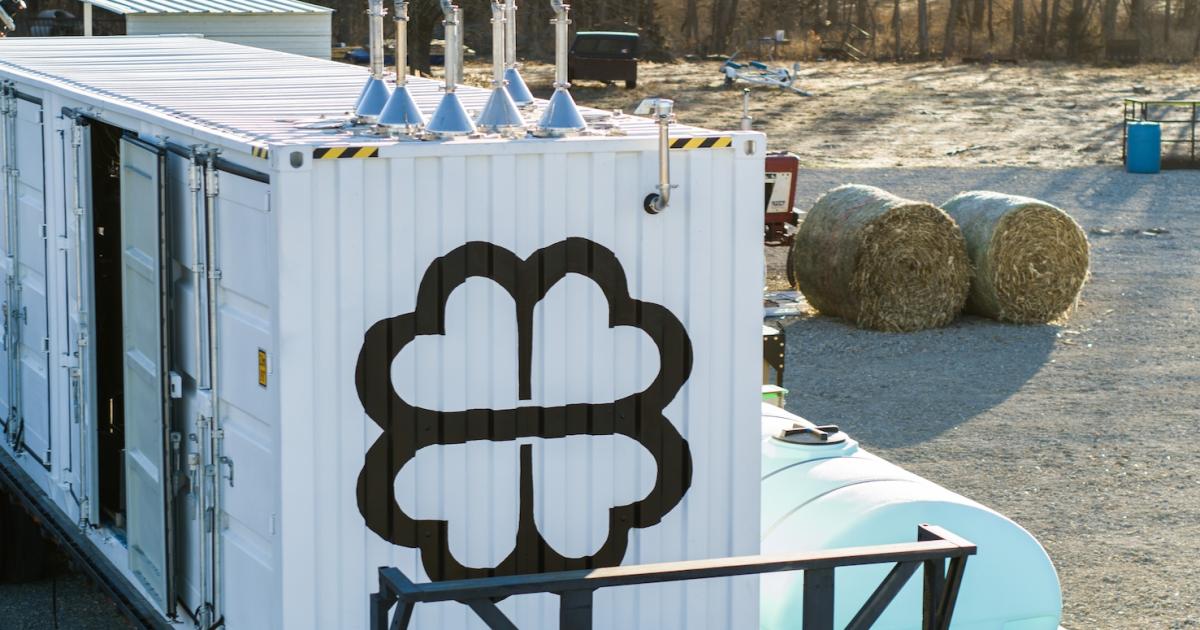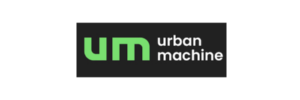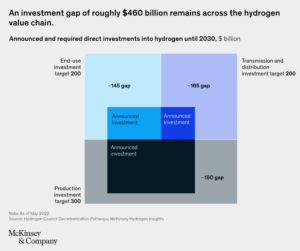
Gigaton-scale carbon removal will be necessary to limit global temperature increases to 1.5 degrees Celsius. But so far, the entire carbon removals industry has recaptured only tens of thousands of metric carbon tons from the atmosphere, a far cry from that scale.
Given that gap, more companies are committing to purchase carbon removal credits as part of their net-zero strategies, acknowledging that many emission sources may not have reliable renewable alternatives by 2050.
Tech companies Microsoft, Shopify and Stripe often claim the spotlight for their innovative carbon dioxide removal (CDR) funding, but many smaller enterprises are also accelerating the scale-up. Adyen, a Dutch payment company, and Zendesk, a Danish-American software as a service provider, are two such companies.
Adyen has so far secured carbon removal credits from five CDR projects and will soon announce its second cohort of purchases. Meanwhile, Zendesk is a partner in the Frontier advanced market commitment, joining 15 other companies making multi-year commitments to purchase CDR credits.
Both companies committed to CDR credits to accelerate global climate progress and scale the carbon removals industry. "We’ve been able to see the impact of our purchases beyond just delivering the [carbon removal] tons. We can see the impact the demand signal is having for these companies to grow and scale," said Lena Pyatkovsky, global sustainability manager for Adyen, which reported annual net revenue of $1.4 billion in fiscal year 2022.
Here are three strategies these companies use to guide their carbon removal funding.
Prioritize quality and scalability over offsetting
Neither Adyen nor Zendesk are securing carbon removal credits to directly offset corporate. Instead, both concentrate on backing projects they see as providing long-term removal and sequestration, and that have the potential to scale.
"We really wanted to look at additionality in terms of our involvement in the project, that our financial contribution was catalytic in some way," said Pyatkovsky.
Although Adyen funds its carbon removal credit purchases via an internal carbon tax on employee travel, the monies aren’t used to directly neutralize those emissions. Instead, Pyatkovky’s team targets carbon removal initiatives closely aligned with their sustainability priorities, regardless of the quantity of carbon credits each project could deliver. These priorities include whether a project has geographical relevance to the company’s operations, and the permanence and additionality of the carbon removal method.
Similarly, Zendesk’s carbon removal strategy is about "building societal-level climate progress" toward net zero, said Shengyuan Su, the company’s director of sustainability. Zendesk, which had annual revenue of $1.4 billion before it was bought in mid-2022 by a private equity group, does not count its carbon removal credit funding through Frontier toward its carbon neutral product commitment. Instead, Zendesk’s CDR strategy is about building a path towards global net zero by mid-century, according to Su.
Link carbon removal budgets to other company climate wins
Zendesk’s sustainability team saved the company over $1 million in annual expenses after several years of improving energy efficiency in its product and cloud usage. Those savings became the original basis for the company’s Frontier portfolio investment, Su said.
Zendesk’s product engineering team — one of the departments that underwent the biggest changes to reduce its energy consumption — has become one of the staunchest internal supporters of Zendesk’s carbon removal purchases. That helped build employee engagement in the company’s CDR strategy, according to Su.
Adyen’s carbon removal budget comes from its internal carbon fee on employee travel, a highly visible and trackable source of greenhouse gas emissions. "Between the carbon price, which we anchored at $100 per ton, and the [travel] emissions, we got a pool of funds," said Pyatkovsky. Adyen’s annual report notes that it settled on the per metric ton price based on the UN Global Compact recommendation.
Bring in external expertise and build a diverse portfolio
While many tech companies funding carbon removal scaleups have built large internal expertise to vet carbon projects, Adyen and Zendesk are much leaner. Each has only one team member managing its carbon removal purchasing initiatives, alongside other responsibilities. To supplement their expertise, they’ve both collaborated with third parties to evaluate projects for quality and consistency with corporate values.
Adyen’s partnership with CarbonX, a CDR procurement company that sources, vets and monitors carbon removal projects for corporate buyers, began with the development of a project scorecard aligned with the company’s sustainability priorities. Pyatkovsky’s team is working with CarbonX in its second procurement cycle, implementing a repeatable vetting process to build the company’s carbon removals portfolio.
Zendesk’s participation in Frontier means the projects it invests in are vetted by the more than 50 technical reviewers in the Frontier network. It has also worked with a consultant to purchase additional carbon removal credits beyond its Frontier commitment.
Both companies are building a portfolio of carbon removal projects rather than a single initiative. Projects the teams have funded include work by CarbonCapture, Charm Industrial and InPlanet, The approaches they’re supporting range from modular direct air capture to biomass carbon removal and storage to enhanced rock weathering for soil carbon sequestration.
From carbon neutral to climate impact
As the stakes of climate change continue to rise, more companies may shift their sustainability strategies from an exercise in balancing the carbon books to pursuing climate solutions with the potential to scale and influence step-change toward global net zero.
As both Adyen and Zendesk demonstrate, even lean sustainability teams can influence growth of the CDR industry. "Starting small will give a buyer a firsthand look at carbon removal pathways and the inherent challenges in their commercialization, but also the power of a demand signal and collective impact. In a market that's so dynamic and also critical to scale, I think there's a role for all of us, no matter how big or small we are," said Pyatkovsky.
"There is no wrong entry point, and taking those first steps are important because there is no time to wait," said Su, describing how Zendesk began its CDR purchasing journey. “Just start with a strategy that resonates with your company and stakeholders, and there are plenty of opportunities to evolve and refine.”
- SEO Powered Content & PR Distribution. Get Amplified Today.
- PlatoData.Network Vertical Generative Ai. Empower Yourself. Access Here.
- PlatoAiStream. Web3 Intelligence. Knowledge Amplified. Access Here.
- PlatoESG. Carbon, CleanTech, Energy, Environment, Solar, Waste Management. Access Here.
- PlatoHealth. Biotech and Clinical Trials Intelligence. Access Here.
- Source: https://www.greenbiz.com/article/how-tech-firms-adyen-and-zendesk-are-securing-carbon-removal-credits
- :has
- :is
- :not
- $1 million
- 1
- 15%
- 2022
- 2050
- 50
- 8
- a
- Able
- About
- accelerate
- accelerating
- According
- Additional
- advanced
- Adyen
- After
- AIR
- aligned
- All
- alongside
- also
- alternatives
- an
- analysis
- anchored
- and
- Announce
- annual
- approaches
- ARE
- AS
- At
- Atmosphere
- backing
- balancing
- based
- basis
- BE
- became
- because
- become
- been
- before
- began
- between
- Beyond
- Big
- Biggest
- Billion
- biomass
- Books
- both
- bought
- budget
- Budgets
- build
- Building
- built
- but
- BUYER..
- buyers
- by
- CAN
- capture
- carbon
- carbon credits
- carbon dioxide
- Carbon Sequestration
- Celsius
- challenges
- change
- Changes
- claim
- Climate
- Climate change
- closely
- Cloud
- Cohort
- collaborated
- Collective
- comes
- commercialization
- commitment
- commitments
- committed
- committing
- compact
- Companies
- company
- Company’s
- concentrate
- consultant
- consumption
- continue
- contribution
- Corporate
- could
- credit
- Credits
- critical
- cycle
- deliver
- delivering
- Demand
- demonstrate
- departments
- describing
- Development
- direct
- directly
- Director
- diverse
- does
- Dutch
- dynamic
- each
- efficiency
- emission
- Emissions
- Employee
- energy
- Energy Consumption
- energy efficiency
- engagement
- Engineering
- enhanced
- enterprises
- Entire
- entry
- equity
- Ether (ETH)
- evaluate
- Even
- evolve
- Exercise
- expenses
- expertise
- external
- far
- Far Cry
- fee
- financial
- firms
- First
- first steps
- firsthand
- Fiscal
- five
- For
- from
- Frontier
- funded
- funding
- funds
- gap
- GAS
- geographical
- Give
- Global
- got
- greenhouse gas
- Greenhouse gas emissions
- Group
- Grow
- Growth
- guide
- had
- Have
- having
- helped
- highly
- How
- HTTPS
- i
- Impact
- implementing
- important
- improving
- in
- include
- Increases
- industry
- influence
- inherent
- Initiative
- initiatives
- innovative
- instead
- interested
- internal
- investment
- Invests
- involvement
- IT
- ITS
- joining
- journey
- jpg
- just
- large
- learning
- LIMIT
- long-term
- Look
- Making
- manager
- managing
- many
- Market
- marketplace
- Matter
- May..
- McKinsey
- means
- Meanwhile
- member
- method
- metric
- Microsoft
- million
- modular
- monitors
- more
- much
- multi-year
- necessary
- net
- net revenue
- net-zero
- network
- Neutral
- news
- Newsletter
- no
- node
- nor
- Notes
- of
- offset
- often
- on
- ONE
- only
- Operations
- opportunities
- or
- original
- Other
- our
- over
- part
- participation
- parties
- partner
- Partnership
- path
- pathways
- payment
- per
- plato
- Plato Data Intelligence
- PlatoData
- Plenty
- Point
- pool
- portfolio
- potential
- power
- price
- private
- Private Equity
- process
- procurement
- Product
- Progress
- project
- projects
- provider
- providing
- purchase
- purchases
- purchasing
- pursuing
- quality
- quantity
- range
- rather
- really
- reduce
- refine
- Regardless
- relevance
- reliable
- removal
- removals
- Renewable
- repeatable
- report
- Reported
- resonates
- responsibilities
- revenue
- Rise
- Rock
- Role
- s
- Said
- saved
- Savings
- Scalability
- Scale
- scale-up
- scorecard
- Second
- Secured
- securing
- see
- sequestration
- service
- Service Provider
- Settled
- several
- shift
- Signal
- single
- small
- smaller
- So
- so Far
- Software
- software as a service
- soil
- Solutions
- some
- Soon
- Source
- Sources
- Spotlight
- stakeholders
- stakes
- start
- Starting
- Steps
- storage
- strategies
- Strategy
- stripe
- such
- supplement
- supporters
- Supporting
- Sustainability
- taking
- targets
- tax
- team
- teams
- tech
- tech companies
- Technical
- tens
- terms
- than
- that
- The
- The Projects
- their
- There.
- These
- they
- think
- Third
- third parties
- those
- thousands
- three
- Through
- time
- to
- Ton
- Ton price
- tons
- toward
- towards
- trackable
- travel
- Trends
- two
- underwent
- us
- Usage
- use
- used
- Values
- VET
- vetted
- via
- visible
- wait
- wanted
- was
- Way..
- we
- weekly
- whether
- which
- will
- with
- Work
- worked
- working
- Wrong
- year
- years
- Your
- Zendesk
- zephyrnet
- zero










